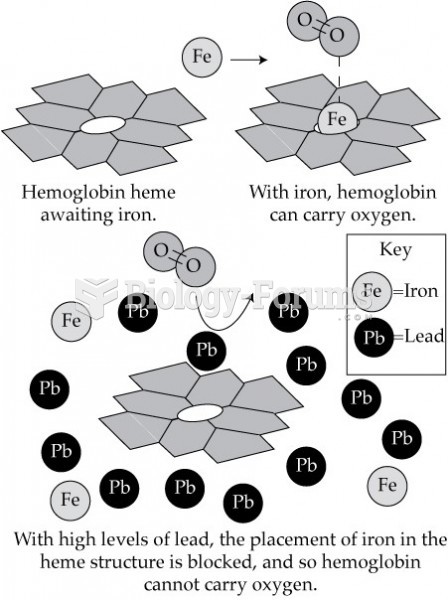|
|
|
The effects of organophosphate poisoning are referred to by using the abbreviations “SLUD” or “SLUDGE,” It stands for: salivation, lacrimation, urination, defecation, GI upset, and emesis.
In 1886, William Bates reported on the discovery of a substance produced by the adrenal gland that turned out to be epinephrine (adrenaline). In 1904, this drug was first artificially synthesized by Friedrich Stolz.
Glaucoma is a leading cause of blindness. As of yet, there is no cure. Everyone is at risk, and there may be no warning signs. It is six to eight times more common in African Americans than in whites. The best and most effective way to detect glaucoma is to receive a dilated eye examination.
Medication errors are three times higher among children and infants than with adults.
In the United States, an estimated 50 million unnecessary antibiotics are prescribed for viral respiratory infections.
 The twin method can be used to investigate genetic and environmental influences on the development o
The twin method can be used to investigate genetic and environmental influences on the development o
 A typical direct-injection system uses two pumps—one low-pressure electric pump in the fuel tank ...
A typical direct-injection system uses two pumps—one low-pressure electric pump in the fuel tank ...





